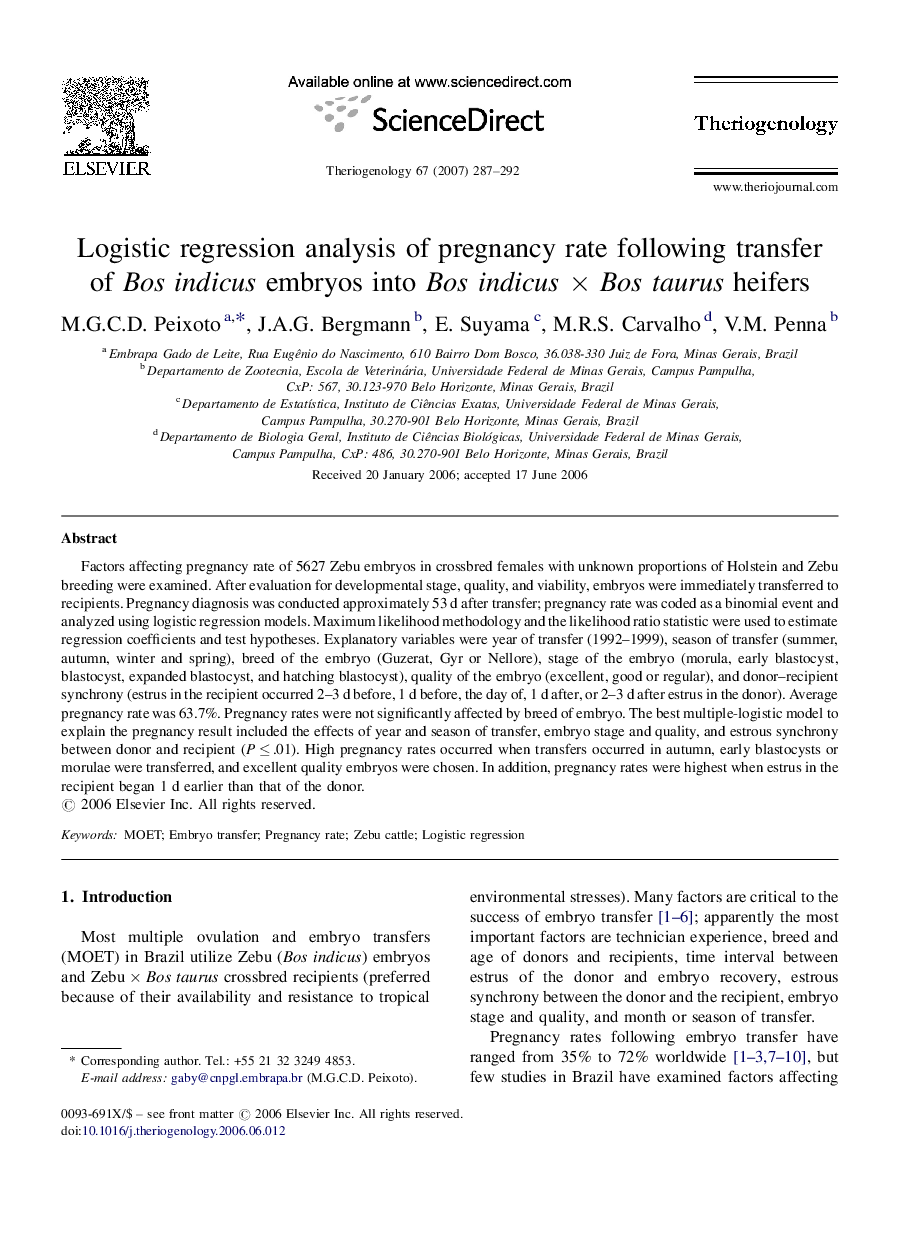| کد مقاله | کد نشریه | سال انتشار | مقاله انگلیسی | نسخه تمام متن |
|---|---|---|---|---|
| 2096548 | 1082171 | 2007 | 6 صفحه PDF | دانلود رایگان |

Factors affecting pregnancy rate of 5627 Zebu embryos in crossbred females with unknown proportions of Holstein and Zebu breeding were examined. After evaluation for developmental stage, quality, and viability, embryos were immediately transferred to recipients. Pregnancy diagnosis was conducted approximately 53 d after transfer; pregnancy rate was coded as a binomial event and analyzed using logistic regression models. Maximum likelihood methodology and the likelihood ratio statistic were used to estimate regression coefficients and test hypotheses. Explanatory variables were year of transfer (1992–1999), season of transfer (summer, autumn, winter and spring), breed of the embryo (Guzerat, Gyr or Nellore), stage of the embryo (morula, early blastocyst, blastocyst, expanded blastocyst, and hatching blastocyst), quality of the embryo (excellent, good or regular), and donor–recipient synchrony (estrus in the recipient occurred 2–3 d before, 1 d before, the day of, 1 d after, or 2–3 d after estrus in the donor). Average pregnancy rate was 63.7%. Pregnancy rates were not significantly affected by breed of embryo. The best multiple-logistic model to explain the pregnancy result included the effects of year and season of transfer, embryo stage and quality, and estrous synchrony between donor and recipient (P ≤ .01). High pregnancy rates occurred when transfers occurred in autumn, early blastocysts or morulae were transferred, and excellent quality embryos were chosen. In addition, pregnancy rates were highest when estrus in the recipient began 1 d earlier than that of the donor.
Journal: Theriogenology - Volume 67, Issue 2, 15 January 2007, Pages 287–292